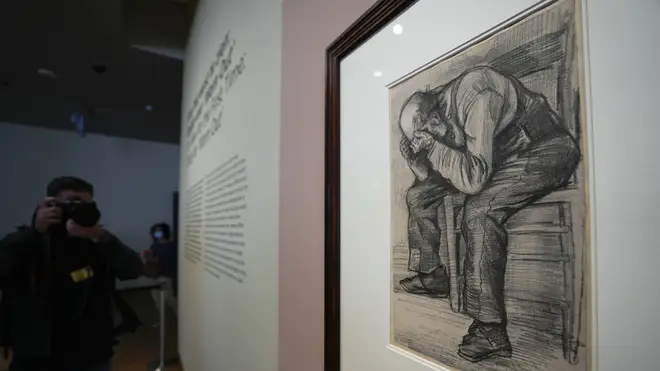
Nick Ferrari 7am - 10am
16 September 2021, 15:24

The study is part of a Dutch private collection and was known only to a handful of people.
A drawing newly attributed to Vincent van Gogh that has never been displayed publicly before is going on show at the Amsterdam museum named after the Dutch master.
The “new” Van Gogh, called Study For ‘Worn Out’, from November 1882, is part of a Dutch private collection and was known only to a handful of people, including a few from the Van Gogh Museum.
The owner, who remains anonymous, asked the museum to determine if the unsigned drawing was by Van Gogh.
🎉We have discovered a new work by Vincent van Gogh! Study for ‘Worn Out’ from 1882 is added to Van Gogh's oeuvre. What do you think of this study? On display in the museum from tomorrow on. Find out more: https://t.co/LyjgpLkRtv pic.twitter.com/86fu9XRbeY
— Van Gogh Museum (@vangoghmuseum) September 16, 2021
Senior researcher Teio Meedendorp said that from the style, to the materials used – a thick carpenter’s pencil and coarse watercolour paper – it conformed to Van Gogh’s Hague drawings.
There were even traces of damage on the back linking it to the way Van Gogh used wads of starch to attach sheets of paper to drawing boards.
“It’s quite rare for a new work to be attributed to Van Gogh,” the museum’s director Emilie Gordenker said in a statement.
“We’re proud to be able to share this early drawing and its story with our visitors.”

The piece comes from a time in the artist’s career when he was working to improve his skills as a painter of people and portraits by drawing them over and over again.
The museum already owns the almost identical drawing titled Worn Out.
“It was quite clear that they are related,” Mr Meedendorp said.
The study has been loaned to the museum and goes on show from Friday until January 2.
It shows an elderly, balding man sitting, hunched forwards, on a wooden chair, his head in his hands. Even the model’s trousers appear to conform to the English title, with a patch clearly visible on the right leg.

It is a far cry from the vibrant oil paintings of vases of sunflowers and French landscapes that eventually turned Van Gogh – after his death in 1890 – into one of the world’s most famous artists, whose works have attracted astronomical prices at auction.
Instead, it illustrates how as a young artist practising his craft in The Hague in 1882, Van Gogh had to confront an uncomfortable truth.
“He discovered that he lacked the ability to paint people. So he was already drawing them but he liked to paint,” Mr Meedendorp said.
“So in order to be able to paint people as well, he went back to the drawing board.”
Van Gogh, who was famously reliant on his brother Theo’s generosity throughout his life, gave the drawings an English title in a bid to build a bit of name recognition and possibly even land a job at an illustrated magazine.
“In his mind, he had an idea that he would reach out farther than Holland in the end as an artist,” Mr Meedendorp said.